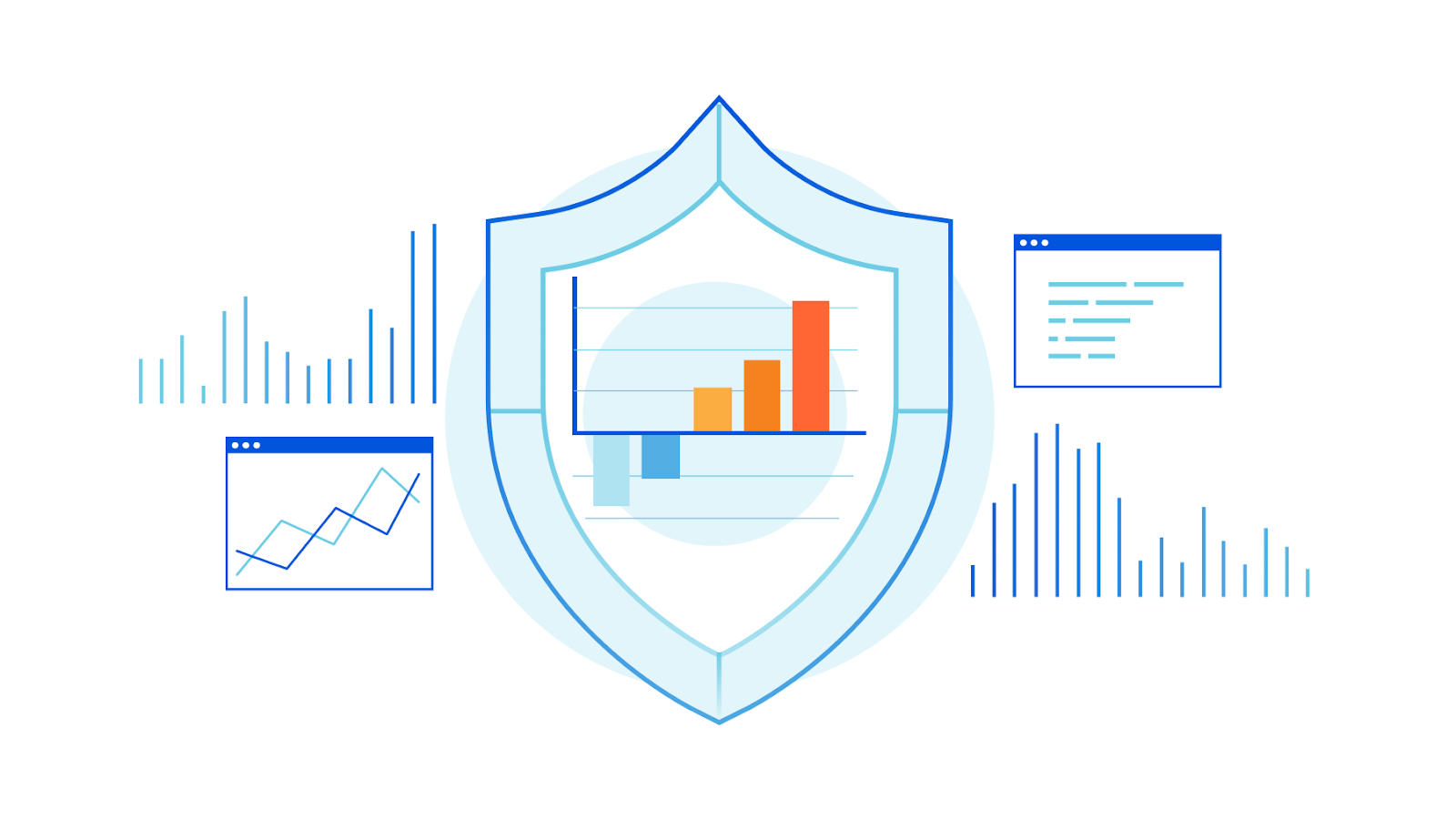Ransomware Attacks: You Can’t Protect What You Can’t See
To combat the rising tide of ransomware attacks, businesses are focusing on their IT inventory for the information they need to properly defend themselves.Cloudflare partners with Kentik to enhance on-demand DDoS protection

We are excited to announce that as of today, network security teams can procure and use Magic Transit, Cloudflare’s industry-leading DDoS mitigation solution, and Kentik’s network observability as an integrated solution. We are excited to help our customers not just with technical simplicity, but business process simplicity as well.

Why monitoring and mitigation?
Distributed Denial of Service (DDoS) attacks are highly disruptive to businesses everywhere. According to the Cloudflare DDoS Attack Trends report, in the first half of 2021 the world witnessed massive ransomware and ransom DDoS attack campaigns that interrupted critical infrastructure, including oil pipelines, healthcare, and financial services. In the second half, we saw a growing swarm of attacks, including one of the most powerful botnets deployed (Meris), with record-breaking network-layer attacks observed on the Cloudflare network.
Along with an increase in severity, there is a proliferation of automated toolkits that make it simple and cheap for anyone to launch these attacks. Detecting and stopping these attacks manually is not effective, and network security engineers are increasingly turning to automated tools to help ensure network and application availability.
DDoS protection has evolved over the years from appliances to hybrid models to fully Internet-native solutions, like Continue reading
HS021 The Great Realisation Not Great Resignation
Headlines about ‘great resignation’ tend to ignore that people are moving jobs not quitting work. We believe many people are making choices about what work they want in their lives. We discuss four reasons: 1) toxic workplaces 2) lifestyle and remote work 3) downstepping and 4) early retirement. We note that recruiters are toxic arms […]
The post HS021 The Great Realisation Not Great Resignation appeared first on Packet Pushers.
HS021 The Great Realisation Not Great Resignation
Headlines about ‘great resignation’ tend to ignore that people are moving jobs not quitting work. We believe many people are making choices about what work they want in their lives. We discuss four reasons: 1) toxic workplaces 2) lifestyle and remote work 3) downstepping and 4) early retirement. We note that recruiters are toxic arms... Read more »AWS Automatic EC2 Instance Recovery
On March 30th 2022, AWS announced automatic recovery of EC2 instances. Does that mean that AWS got feature-parity with VMware High Availability, or that VMware got it right from the very start? No and No.
Automatic Instance Recover Is Not High Availability
Reading the AWS documentation (as opposed to the feature announcement) quickly reveals a caveat or two. The automatic recovery is performed if an instance becomes impaired because of an underlying hardware failure or a problem that requires AWS involvement to repair.
AWS Automatic EC2 Instance Recovery
On March 30th 2022, AWS announced automatic recovery of EC2 instances. Does that mean that AWS got feature-parity with VMware High Availability, or that VMware got it right from the very start? No and No.
Automatic Instance Recover Is Not High Availability
Reading the AWS documentation (as opposed to the feature announcement) quickly reveals a caveat or two. The automatic recovery is performed if an instance becomes impaired because of an underlying hardware failure or a problem that requires AWS involvement to repair.
Introduction to MPLS – Fundamentals of MPLS
MPLS Multiprotocol Label Switching is one of the most popular and commonly used technologies in today’s Service Provider and Enterprise networks. In this post, we will explain the most fundamental topics about MPLS. After reading this post, you will learn a lot about MPLS, why we should use MPLS to MPLS packet formats, USA cases of MPLS to MPLS advantages and MPLS disadvantages, some recommendations about MPLS books, MPLS training, some basics MPLS questions, and many other things will be covered. Sit tight and let’s enjoy!.
What is MPLS in Networking?
Multiprotocol Label Switching – MPLS, is a networking technology that switch the network traffic using the shortest path based on “labels,” rather than IP destination addresses, to handle forwarding over a private Wide Area Network.
MPLS is a scalable and protocol-independent solution, that can carry Layer 3 IP and Non-IP and Layer 2 traffic, PPP, HDLC, Frame-Relay, Ethernet, all are possible.
MPLS provides transport and can be considered one of the tunneling mechanisms.
MPLS transport protocols as of 2022, are LDP, RSVP, Segment Routing and BGP LU.
An MPLS network is Layer 2.5, meaning it falls between Layer 2 (Data Link) and Layer 3 (Network) of the OSI Continue reading
Return-to-Office Moment Drives Discord
Big tech and other companies are mandating employees return to the office, at least on a hybrid basis, after two years of pandemic-driven work-from-home. Will employees show up? Or will they quit?DDoS Attack Trends for 2022 Q1

This post is also available in 日本語, Deutsch and Français.

Welcome to our first DDoS report of 2022, and the ninth in total so far. This report includes new data points and insights both in the application-layer and network-layer sections — as observed across the global Cloudflare network between January and March 2022.
The first quarter of 2022 saw a massive spike in application-layer DDoS attacks, but a decrease in the total number of network-layer DDoS attacks. Despite the decrease, we’ve seen volumetric DDoS attacks surge by up to 645% QoQ, and we mitigated a new zero-day reflection attack with an amplification factor of 220 billion percent.
In the Russian and Ukrainian cyberspace, the most targeted industries were Online Media and Broadcast Media. In our Azerbaijan and Palestinian Cloudflare data centers, we’ve seen enormous spikes in DDoS activity — indicating the presence of botnets operating from within.
The Highlights
The Russian and Ukrainian cyberspace
- Russian Online Media companies were the most targeted industries within Russia in Q1. The next most targeted was the Internet industry, then Cryptocurrency, and then Retail. While many attacks that targeted Russian Cryptocurrency companies originated in Ukraine or the US, another major source of attacks Continue reading
IP Transit and the Tiers of Transit Providers
The post IP Transit and the Tiers of Transit Providers appeared first on Noction.
Keep Blogging, Some of Us Still Read
I stumbled upon a sad tweet a few days ago…

… and not surprisingly, a lot of people chimed in saying “don’t give up, we still prefer reading”. Unfortunately, it does seem like the amount of worthy content is constantly decreasing, and way too many quality blogs disappeared over the years, so I’ll try to lift the veil of depression a bit ;)
Keep Blogging, Some of Us Still Read
I stumbled upon a sad tweet a few days ago…

… and not surprisingly, a lot of people chimed in saying “don’t give up, we still prefer reading”. Unfortunately, it does seem like the amount of worthy content is constantly decreasing, and way too many quality blogs disappeared over the years, so I’ll try to lift the veil of depression a bit ;)